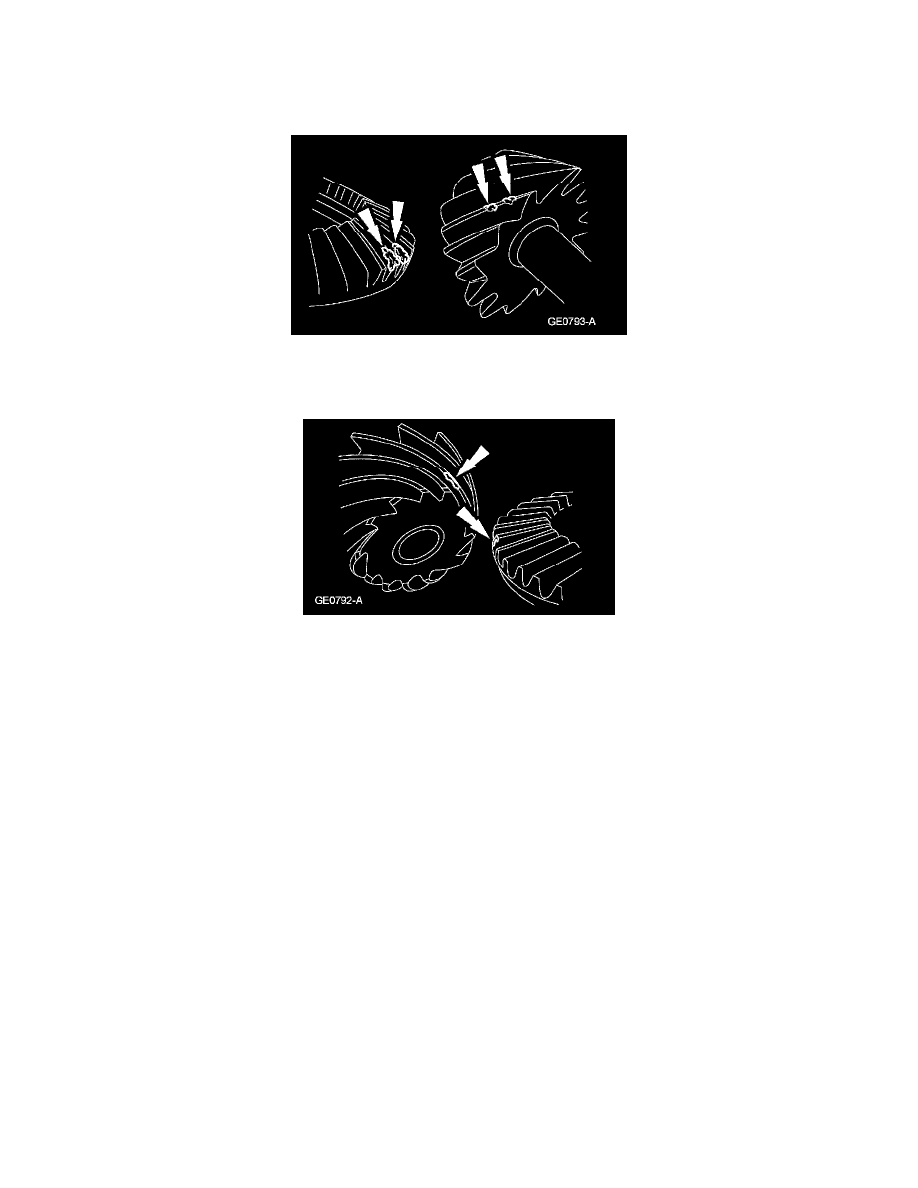E 350 V10-6.8L VIN S (2006)

If metal has broken loose, the axle housing must be cleaned to remove particles that will cause damage. At this time, any other damaged parts in the
axle housing must also be installed new.
Knock
Knock, which can occur during all driving phases, has several causes, including damaged teeth or gearset.
In most cases, one of the following conditions will occur:
1. A gear tooth damaged on the drive side is a common cause of the knock. This can usually be corrected by grinding the damaged area.
2. NOTE: Measure the endplay with a Dial Indicator Gauge with Holding Fixture and not by feel.
Knock is also caused by excessive in-out end play in the axle shafts. Up to 0.762 mm (0.030 inch) is allowed in semi-float axles. The frequency of
the knock will be less because the axle shaft speed is slower than the driveshaft.
Clunk
Clunk is a metallic noise heard when the automatic transmission is engaged in REVERSE or DRIVE.
The noise can also occur when throttle is applied or released. It is caused by backlash somewhere in the driveline or loose suspension components; it
is felt or heard in the axle. Refer to Total Backlash Check.
Additionally, clunk may be heard upon initial drive-away. This occurs as engine torque shifts vehicle weight, forcing changes in driveline angles,
preventing the driveshaft slip-yoke from sliding on the output shaft. To correct for this condition, lubricate the slip-yoke splines.
Total Backlash Check
1. With the vehicle in NEUTRAL, position it on a hoist. Refer to Maintenance/Service and Repair.
2. Remove the driveshaft.
